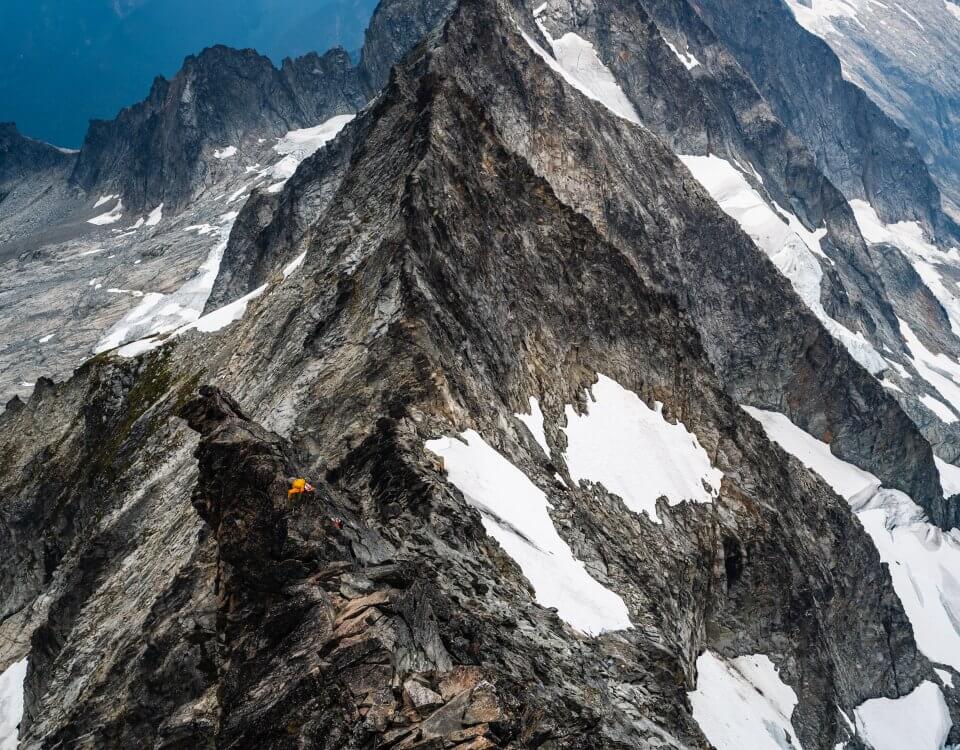Mission Restoration Project: Opportunities to Improve Implementation

Midnight Restoration Project: A Solution for the Upper Twisp Watershed?
December 9, 2022
Upcoming and Ongoing Forest Restoration Projects
December 17, 2022As the first collaborative restoration project to be implemented on the Okanogan-Wenatchee National Forest tiered from the Restoration Strategy, we held high hopes for Mission setting a benchmark for later projects in the Twisp and Upper Methow watersheds. During the late summer and early fall, several MVCC staff went out into the field to see some of the units that were logged. While we were encouraged by some aspects of the project—the noncommercial work and aquatic work that includes beaver dam analogs—many of the commercial units are not up to the standards the Forest Service outlined in its own Environmental Assessment. Sam Israel, our forest field specialist, conducted some monitoring plots this fall in areas that have been treated. His findings are discussed below.
An underlying problem may lie in the word “commercial” itself. Selling board-feet of lumber has long been the model for revenue for forest projects. How can we move towards a model in which logging companies are incentivized by the number of acres restored rather than the volume of timber that is removed? Funding from the Infrastructure Law could help to allay some concerns about being financially feasible.
Noncommercial components are vital
Approximately 80% of the Mission Restoration Project treatments are focused on noncommercial thinning, in which hand crews thin out all the small trees and limb larger trees. Where this work is completed, hazardous ladder fuels are reduced and dense overstocked forests are opened up considerably, allowing light through the canopy and helping the remaining trees to grow larger. 1500 acres of a planned 8000 acres of noncommercial work was completed last summer on the Mission Project. Beaver dam analogs installed at Black Pine Meadows will help to attract beaver back to the area after large storms in the 2000’s destroyed decades of native beaver habitat. Large woody debris has been felled into the stream along Libby and Buttermilk Creek which will help create quality pools and riffles for native fish. These are all parts of this projects that are encouraging to see.
Beaver Dam Analogs at Black Pine Meadows will help to attract beaver back after large storms in the 2000’s destroyed habitat
Are we restoring variability to our forests?
Due to over a century of fire-suppression and heavy logging practices, most of the forests surrounding us are out of their natural range of variability. Our nearby upland forests are almost uniformly too dense. Looked at from the birds-eye-view, a forest’s structure should have variation with clumps of trees, natural openings and a multi-story forest structure. The idea behind the commercial treatments in Mission is to maintain and restore some of this natural variability by leaving an assortment of clumped trees around the largest and most dominate trees to mimic natural disturbance. Over time this helps to create a healthy and resilient forest structure.
Opening up too much can remove forest structure
The Environmental Assessment for Mission Restoration Project called for 30-40 trees to be left per acre in most of the treatments. Unfortunately, the number of trees left in some of the commercial logging units appear to be below this number. Although the sparseness of the forest in these areas is evident when you step into it, our Forest Field Specialist, Sam Israel, confirmed it by measuring 3-acre monitoring test plots inside of harvested logging units. The question that arises from these observations is: Does opening the forest up this much more lead to more resiliency? Our main concern is that many of these areas no longer have much forest structure. Without much shade, shrubs and weeds could become dominate leading to increased fire danger. Following up with prescribed fire in these stands will be essential.
Marking leave trees (orange) is an easy way to make sure the Environmental Assessment is followed and the most robust trees in the right spatial arrangement are left standing.
Leaving the largest trees standing
East of the Cascades our trees take a long time to grow! Mature ponderosas are often 100-200 years old. Even a moderately sized tree that’s 21’’ in diameter (the cut limit unless it has mistletoe where can go up to 25”) might be a hundred years old. We were thus dismayed to see the selection of leave trees in the commercial stands. Many mature trees were cut and spindly ones were left. It will take a long time for those spindly trees to create the forest structure desired. This can easily be remedied in the future by marking leave trees. We will be recommending this to the Forest Service as they continue implementation of Mission next year.
Much to improve on
We have done our part in monitoring and calling attention to the parts of this project which are not up to the Forest Service’s own Environmental Assessment. We are now calling on leadership in the agency to issue a course change as the project resumes next spring and summer. About 1000 acres of the 1500 commercial acres remain to be cut. We will be continuing to monitor the project closely.
Have you seen some of the Mission Treatments? What were your impressions? We’d like to hear your thoughts.




